CRAIG VETTER
In 1971, American freelance designer Craig Vetter was asked to restyle the Triumph Bonneville. The result received good feedback in the USA – but British bosses disagreed and the bike never entered production
Words MICK DUCKWORTH Photography CRAIG VETTER & MICK DUCKWORTH
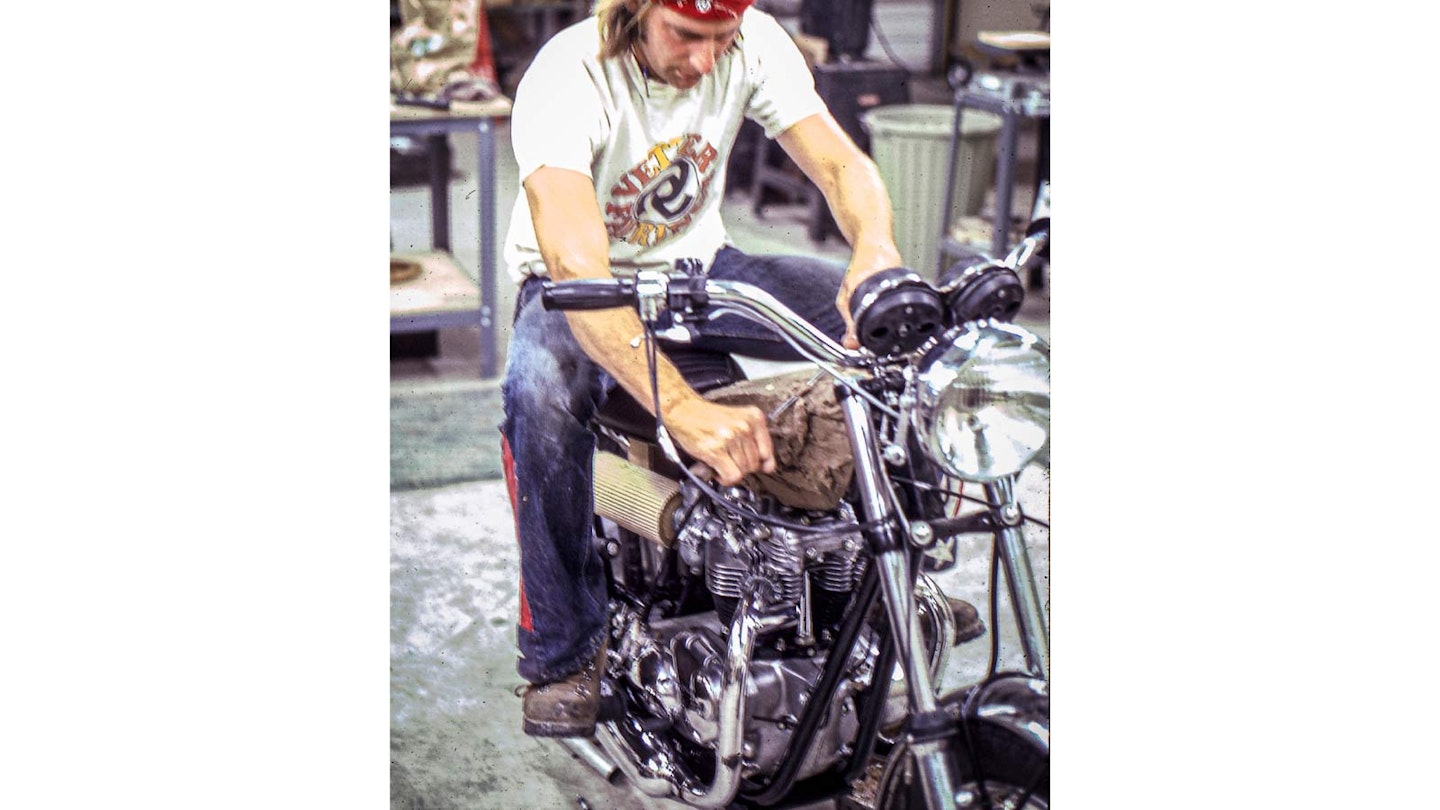
Of all the misadventure and missed opportunities that littered the last days of the British motorcycle industry in the 1970s, the Bonneville TT is probably one of the most unfortunate. The dirttracker-influenced machine could have been a contender – especially in the USA, where Triumph’s esteem had taken a dip – and earned lucrative Stateside sales. But, although a prototype was produced and shown to Triumph bosses in the UK and dealers in the US, it failed to make production. Why?
The model’s creation was fuelled by the reaction from Triumph’s US dealers and loyal customers to the redesigned 650cc Bonneville, launched for 1971. They thought the makeover, executed by the BSA Group’s Umberslade Hall research centre, was a disaster. Not only was the seat set so high on the oil-bearing frame that it could be awkward even for six-footers, the new look also lacked the pizazz that had become a Triumph trademark. Sales were plummeting, just as the US went into an all-time motorcycling boom.
That’s why Jack Redmon, Stateside Triumph’s newly-appointed Product Planning Director, turned to Craig Vetter. The switched-on Illinois-based industrial designer and fairing manufacturer had already made his name by creating what became the Triumph X-75 Hurricane. Commissioned by BSA’s Eastern US office in 1969 because of disappointment at the 750cc Rocket 3’s boxy looks, the radically-styled triple caused a sensation when pictured on the cover of Cycle World magazine in September 1970. But potential Hurricane owners had to wait until 1973, when it emerged as a Triumph. It has since become a cult machine.
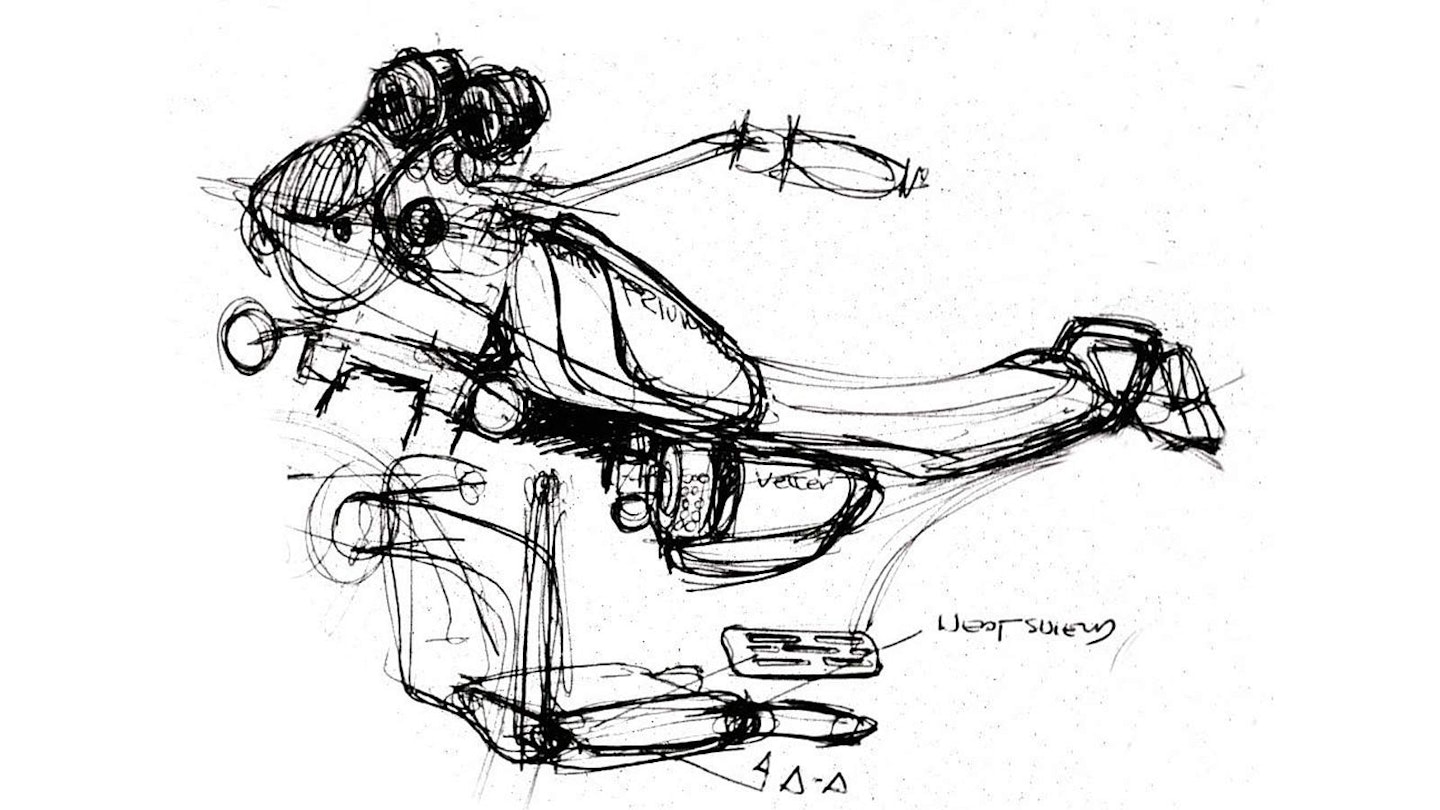
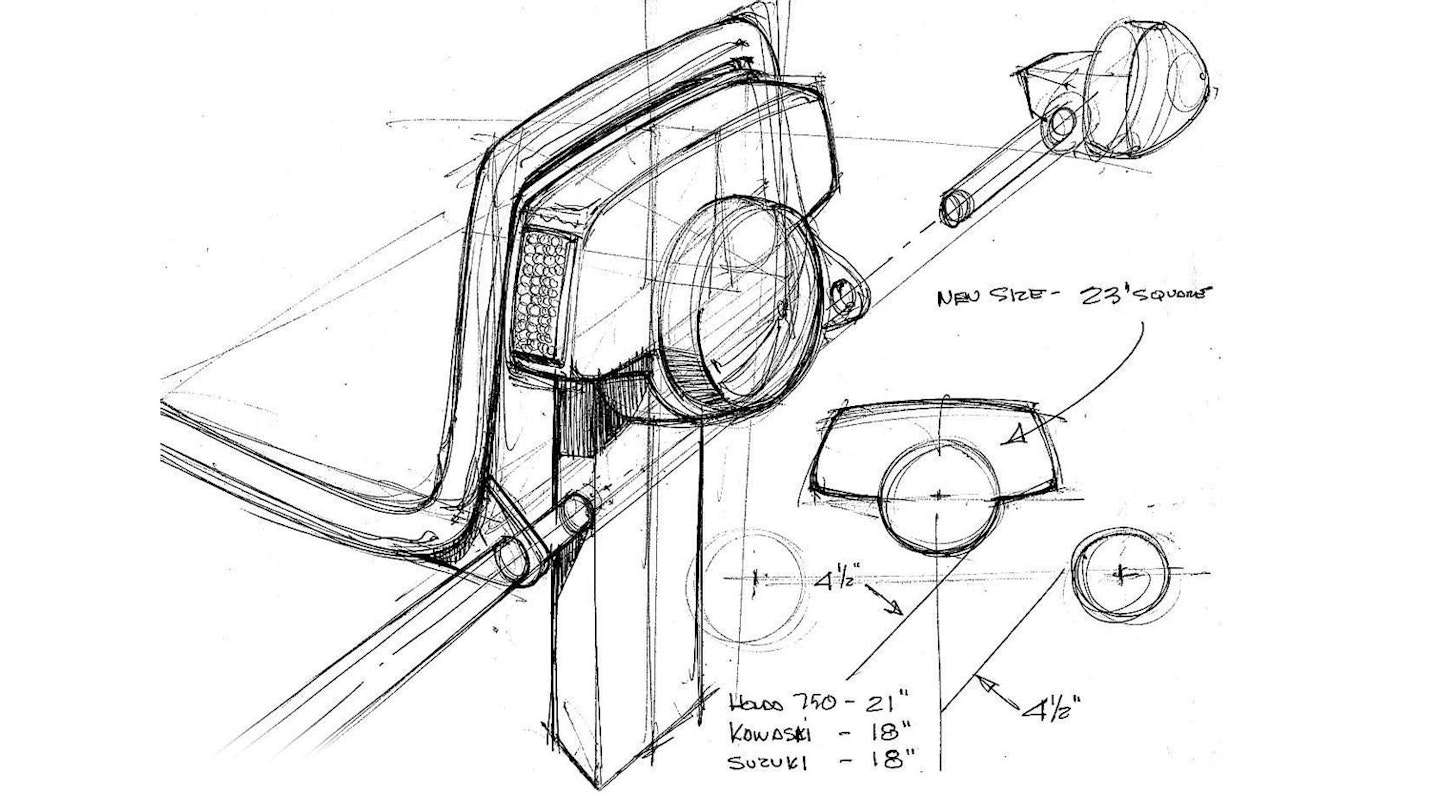
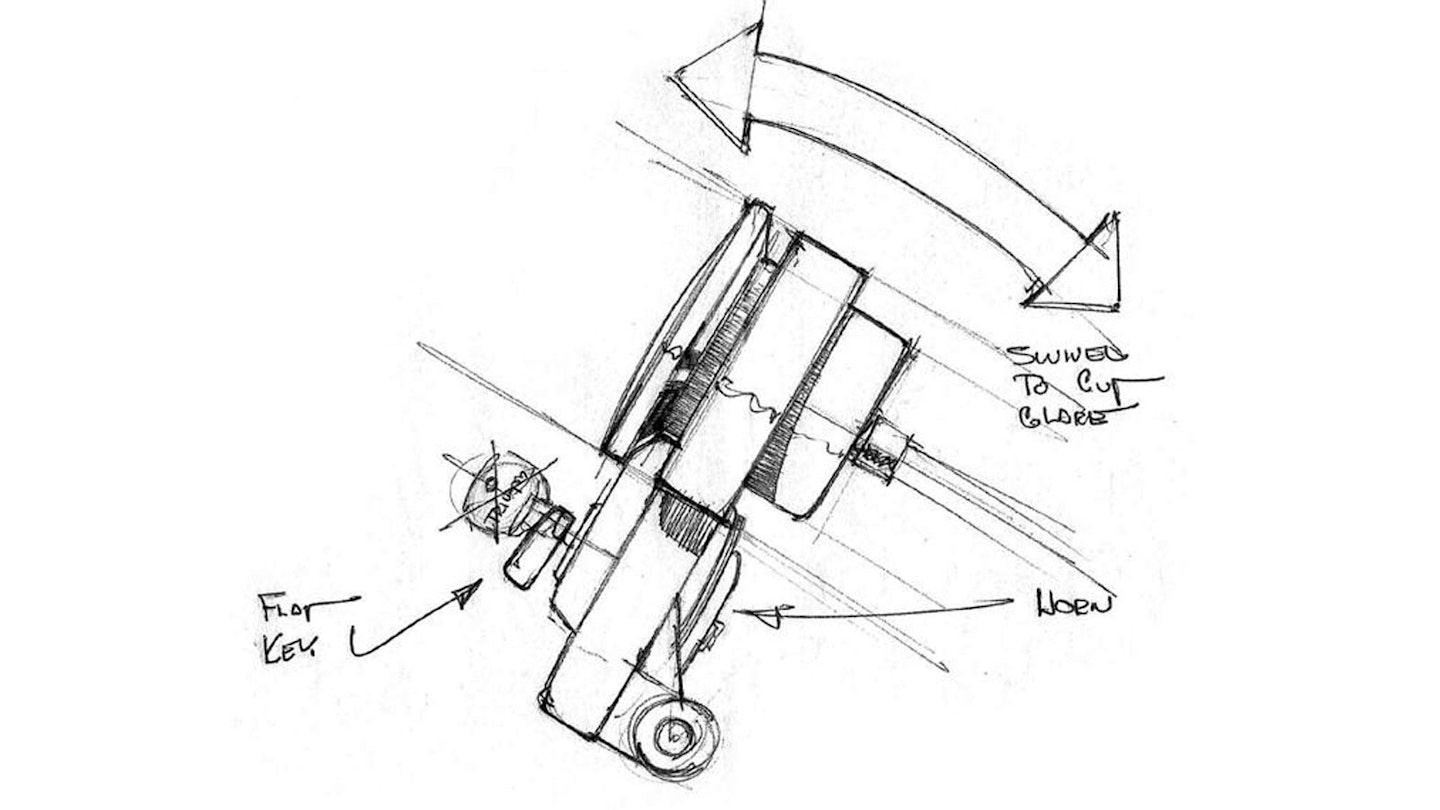
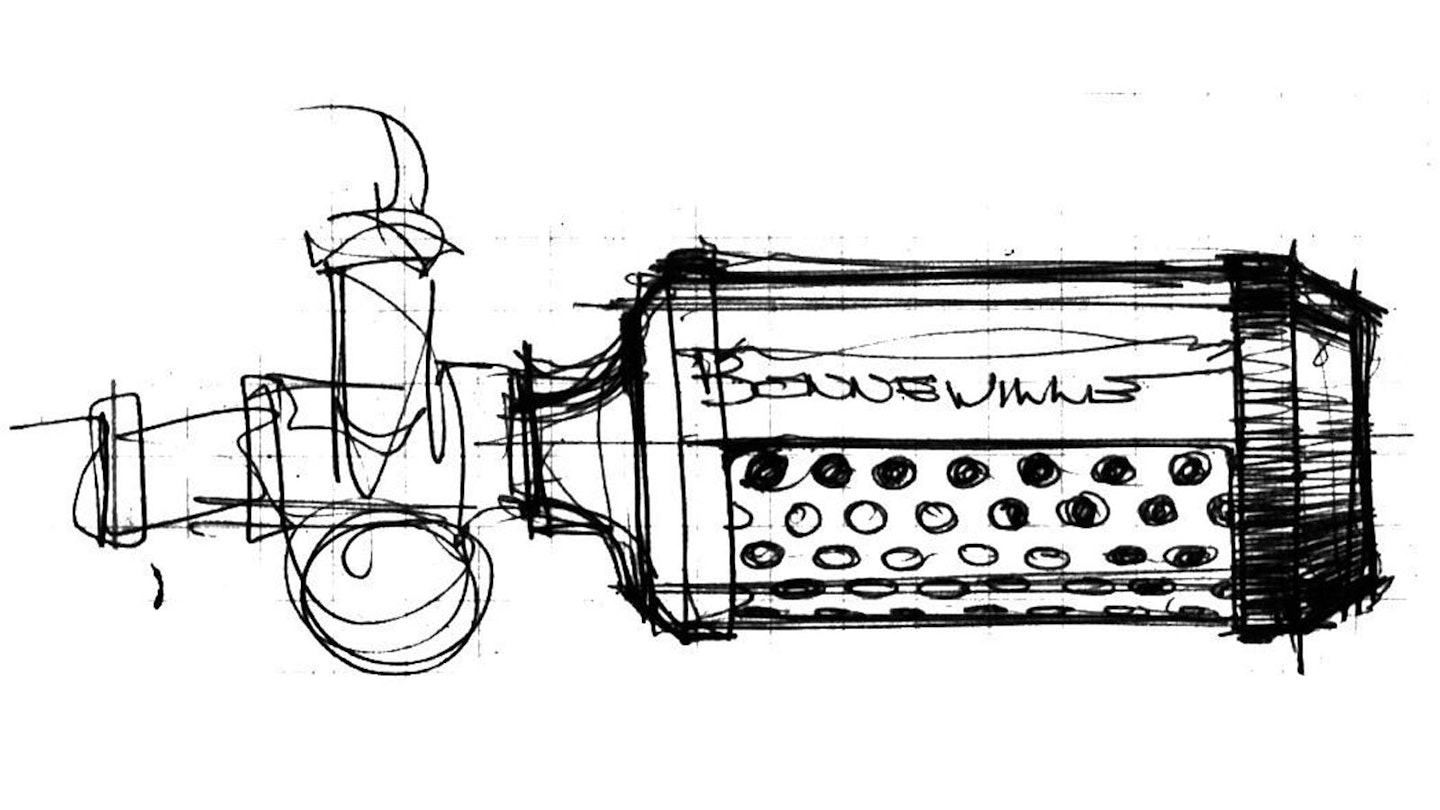
“Jack called in November 1971,” Craig recalls. “He was worried. Demand for the Bonneville had fallen off and Triumph was in trouble. He wanted a redesign of the just-redesigned Bonneville and suggested a number of solutions. The one he favoured most was a chopper style, like a conversion he’d seen offered by Triumph Burbank in California.” That didn’t work for Craig. He knew Triumph history and understood how much styling established by Edward Turner and his gifted assistant Jack Wickes, known as ‘Turner’s pencil’, had contributed to the brand’s success in the USA. Like Redmon, he thought the 1971 redesign had lost the magic.
“I was asked to return the Bonneville’s good looks – but at the same time, take the model into the future. Making it American, but also British. I looked to the style of bikes racing on American TT dirt tracks. Studying photos of Gene Romero’s 1970 AMA National Championship-winning Triumph, I was inspired to make a TT bike for the street.
“I signed a contract with Triumph in January 1972, and in May I was given two Bonnevilles to work on – 750s, like Romero’s. I had three months to do the redesign, but was also busy with my Windjammer fairing that had launched a few months earlier.” Charly Parethian, an enthusiastic student from the Rhode Island School of Design who’d written to Craig asking if he could work for him, joined other keen design students in making various parts to his designs, sometimes in cardboard.
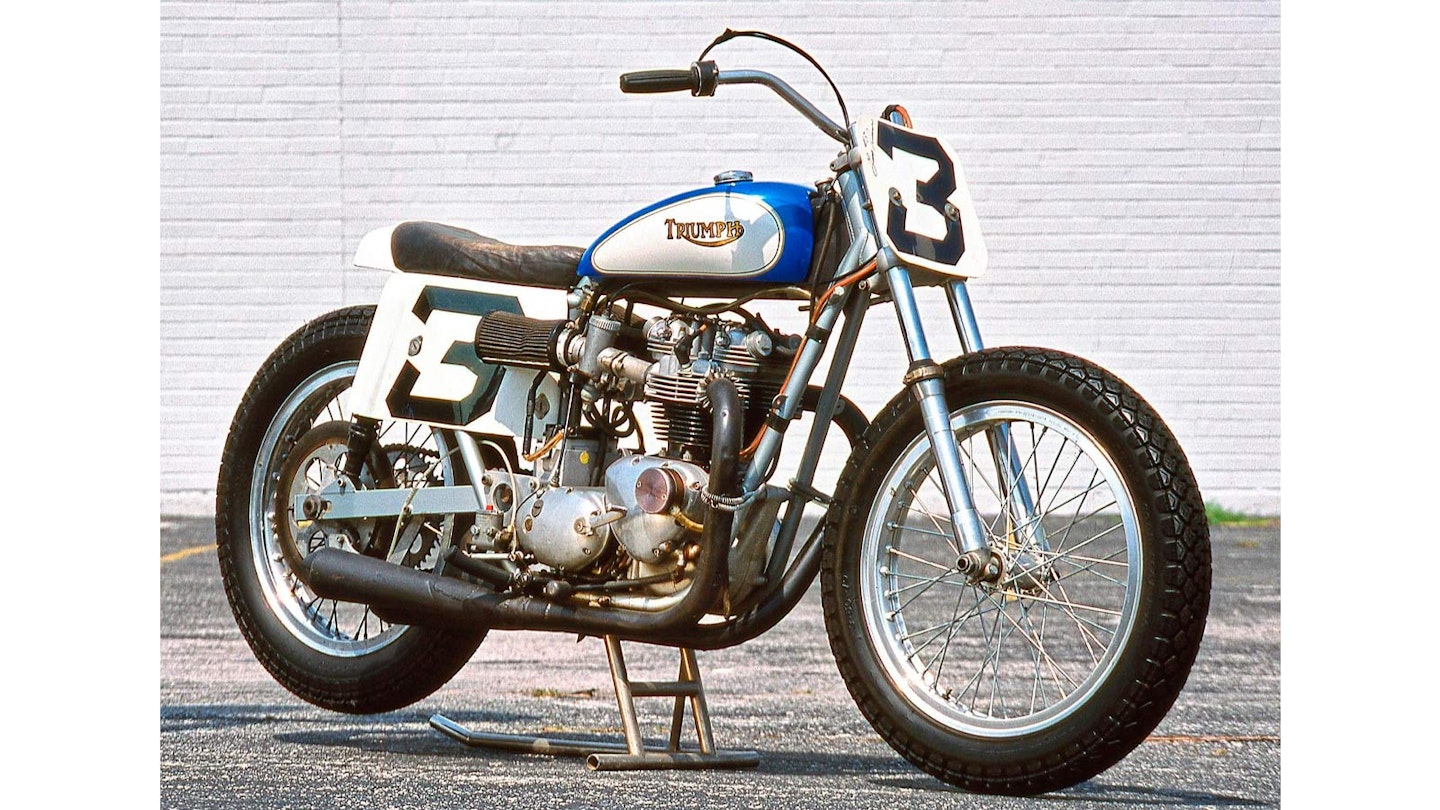
Even before being contracted, Craig had started making loose sketches, a method he favours over the detailed renderings produced by some automotive stylists. “I think quick sketches have more life and spirit than polished drawings,” he explains. One of the first elements he chose to accentuate was the widely-splayed individual K&N air filters on the 750cc Romero engine’s carburettors. Looking to create the same effect, while complying with construction regulations, he and Charly fashioned a cardboard mock-up of cylindrical filter housings that drew air from a closed underseat box acting as a plenum chamber with a slot for air to enter.
Craig felt it imperative to replace the flat-backed headlamp shell with the traditional teardrop style, mounted on ‘ears’, rather than the much-criticised chromed wire and rubber bushes arrangement adopted in 1971. Vetter’s brackets would also carry direction indicator stalks. Thinking about the legendary raised ‘dinner plate’ instruments on Vincent twins, he designed a new binnacle unit that lifted the speedometer and rev counter into the rider’s line of sight. The tilt angle of the assembly, which incorporated the ignition key switch and warning lights, could be adjusted to suit the rider. Noting that the rubber surrounds for the standard instruments sagged out of shape, he changed the material. The horn was sited at the front of the binnacle, facing those who needed to hear it. The handlebars had the high-rise pattern many US dealers had wanted for years and the seat was made as low as possible.
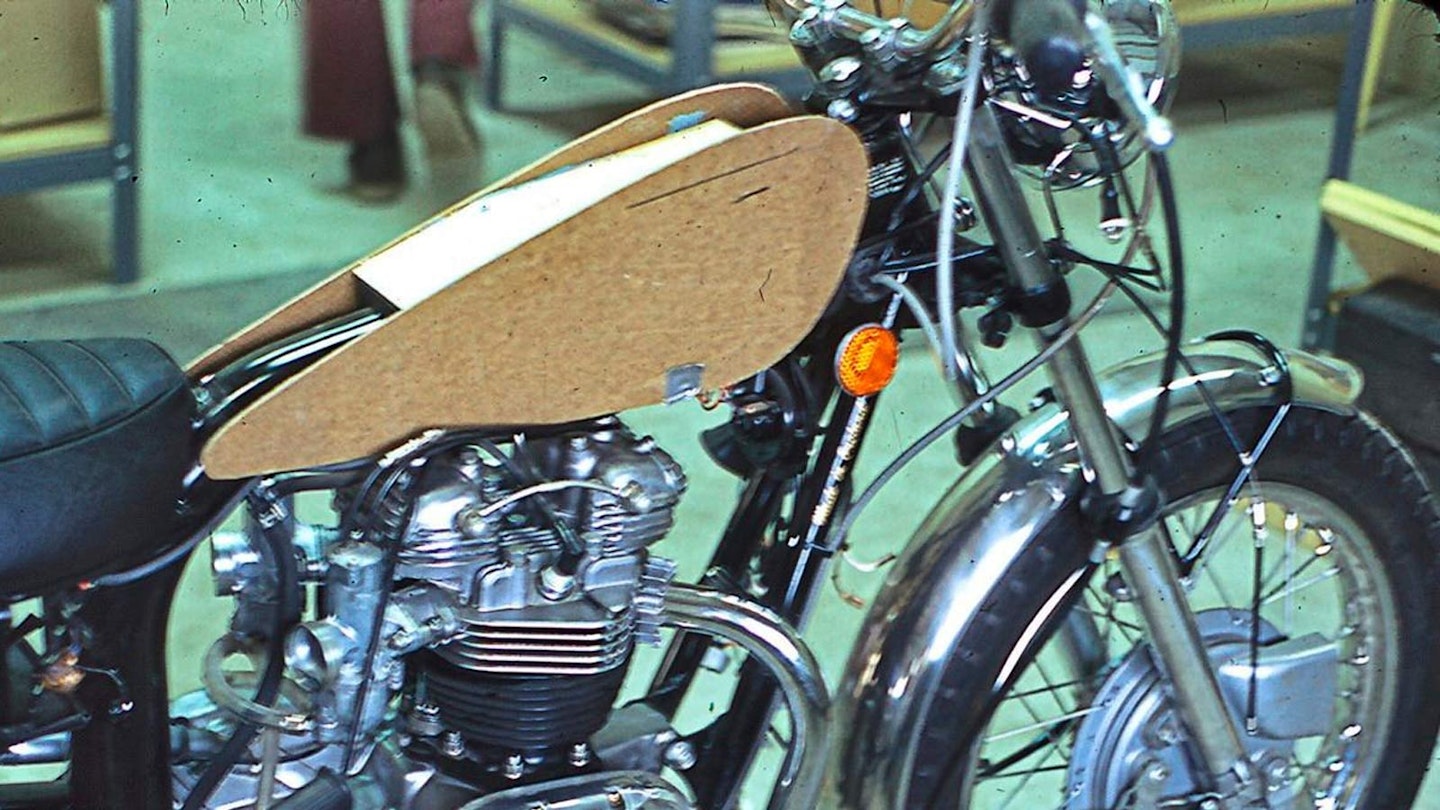




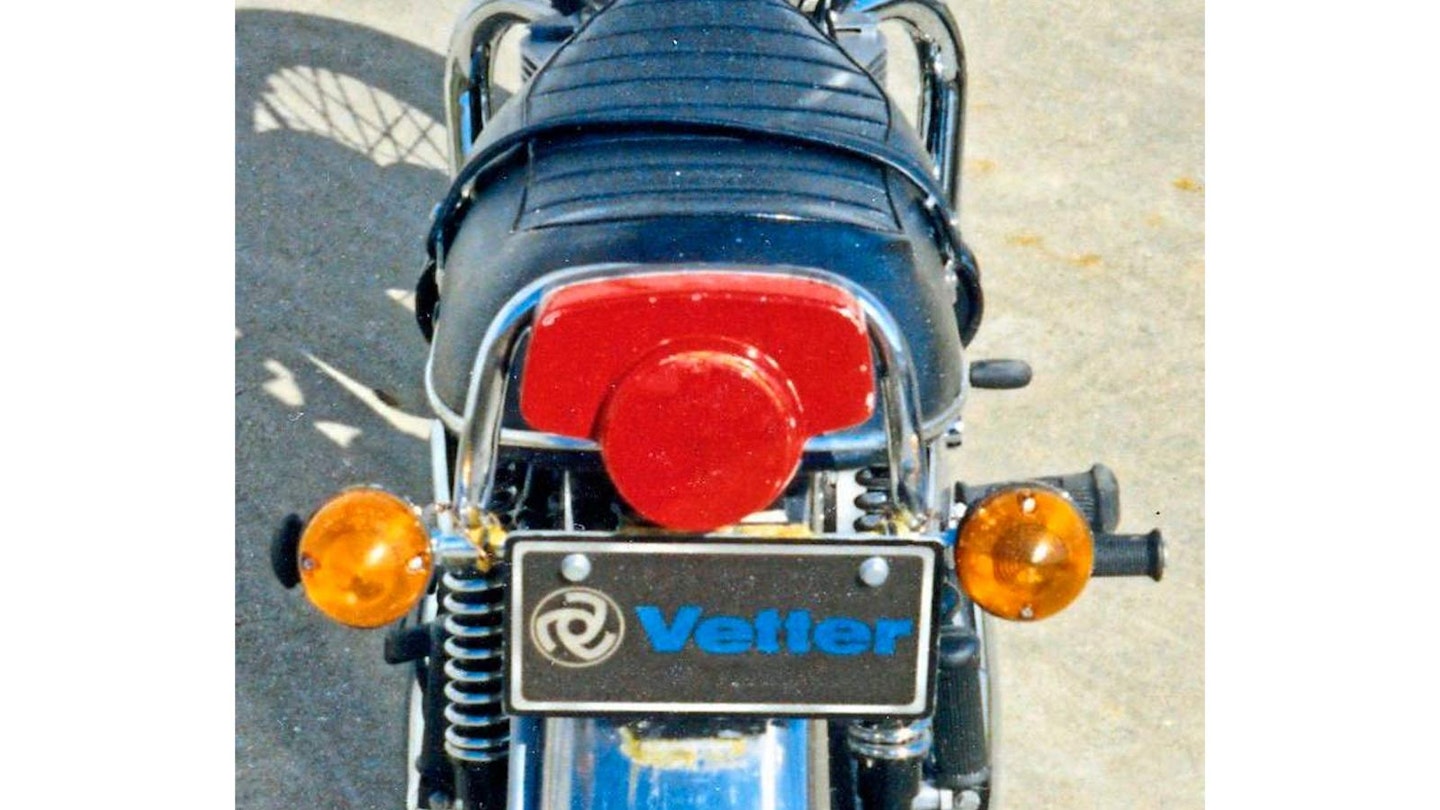
“I wanted a slender gas tank in the Turner tradition,” Craig explains. “Round at the front and pointed at the rear.” A shapely dummy was formed with board and clay, which had to surround the large-diameter top tube of the oil-carrying frame, compromising on fuel capacity.
“The biggest mistake I made was to paint the bike all black, because that doesn’t show up details. We had tried and rejected the blue and white livery of Romero’s racer livery, but in hindsight I should have kept that.” The tank’s deep gloss black with gold pinstriping in typically Triumph scallop shapes was later changed to incorporate a gold-edged red panel on the front upper part.
“I always believed my under-engine exhaust system was the design’s best feature,” Craig says. Aware of Triumph’s concern over looming noise regulation, he combined a strong styling statement with a technical solution. “With 15 times the engine capacity, it would make the new Bonneville quieter than anything ever. Honda did the same thing a few years later on the GL1000 Gold Wing.” TT-style slanting downpipes fed into the large canister under the power unit, while heat shields on the twin outlet pipes were formed by the outer casings of old-style Bonneville silencers, with the assembly achieving six inches of ground clearance.

Craig – and many US owners – thought Triumph rear lamp units had become ugly. Aware of upcoming US regulations, Vetter made sure his version was large. “I didn’t know what the new minimum size would be, so I measured existing Japanese tail lights and made mine bigger. I put a grab rail over it and raised it to make sure car drivers could see it over their hoods [bonnets].
“We had expected the 1971 Bonneville to have disc brakes,” recalls Craig, who had been given a rear wheel assembly with an AP Lockheed caliper and disc by the US BSA/Triumph racing organisation – but no front disc was forthcoming, although one would eventually be fitted.
Craig completed the job in the autumn of 1972 and called his creation the Bonneville TT, echoing the admired Bonneville TT Special of 1963-1967. It was despatched to BSA/Triumph’s Eastern headquarters in Verona, New Jersey and shipped to the UK, arriving on October 28, according to Craig’s notes. He doesn’t recall enthusiasm for the design when he followed the bike to Triumph’s Meriden factory. Standing out from the suited managers with his long hair and fashionable clothes, at least he had the satisfaction of seeing the Hurricane finally roll off the assembly line during his visit.
The Vetter TT was toured around six main centres in the US for evaluation and a marketing survey produced in February 1973 for BSA Co Inc by the Ruben Kleiman Research Company. It reported dealer and rider reactions, both to the ‘contemplated 1974 Bonneville TT’ and the new 750cc T140 Bonneville. The report said that only one in ten dealers were negative about the Vetter version.
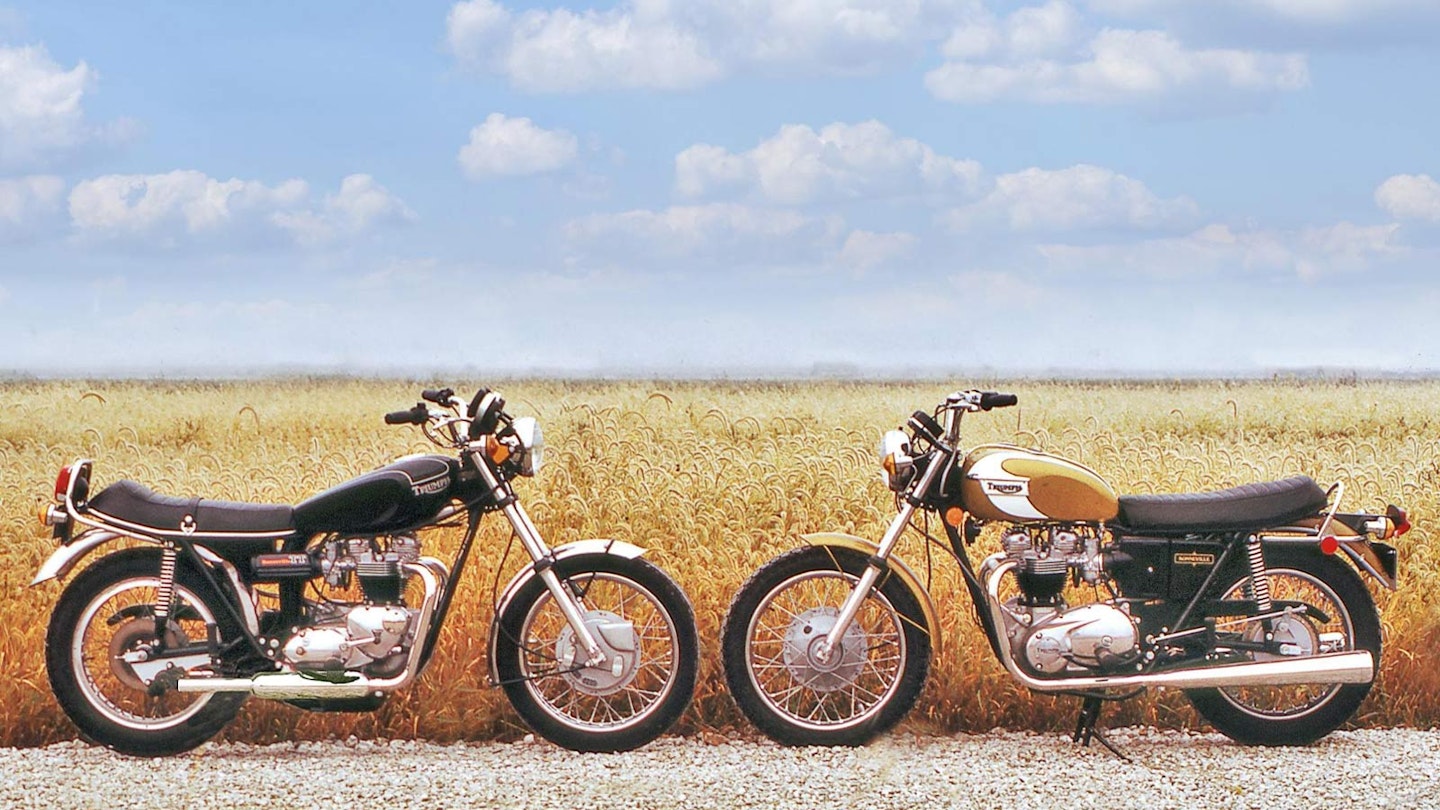
But then, in March 1973, the BSA company collapsed.
A plan for Triumph to be taken under the control of Norton’s owner Manganese Bronze Holdings (MBH) with government support went ahead and all bets were off. Norton Villiers Triumph, formed in mid-1973, planned to close Meriden, transfer equipment to the former BSA plant at Small Heath and, after building a final large batch of Bonnevilles, kill off the long-lived Turner twin design. Setting up to produce another version of the Bonneville was not on the cards. Vetter’s Bonneville prototype now resides in the AMA Hall of Fame, alongside the Hurricane design study and the limited edition 1980 Mystery Ship. It was brought to the UK for the Triumph Owners MCC Bonneville 50th anniversary celebration at Gaydon in 2009, when Craig gave an illustrated talk.
Craig says he was never formally told that production of the TT Bonneville would not go ahead. “Nobody ever told me why,” he says. “I don’t think they liked it, but then the BSA guys in England didn’t like the Hurricane. All I was told was that some parts of my design might be used.”
That assurance did have some basis in truth, as it turned out. Probably thanks to the cordial relationship that had formed between Craig and Jack Wickes, one major element of the TT design did survive – the shape of the fuel tank on NVT’s Small Heath-built Trident T160, which was launched in 1975, shows strong Vetter influence. It’s a small epitaph for a bike that could have gone so much further.
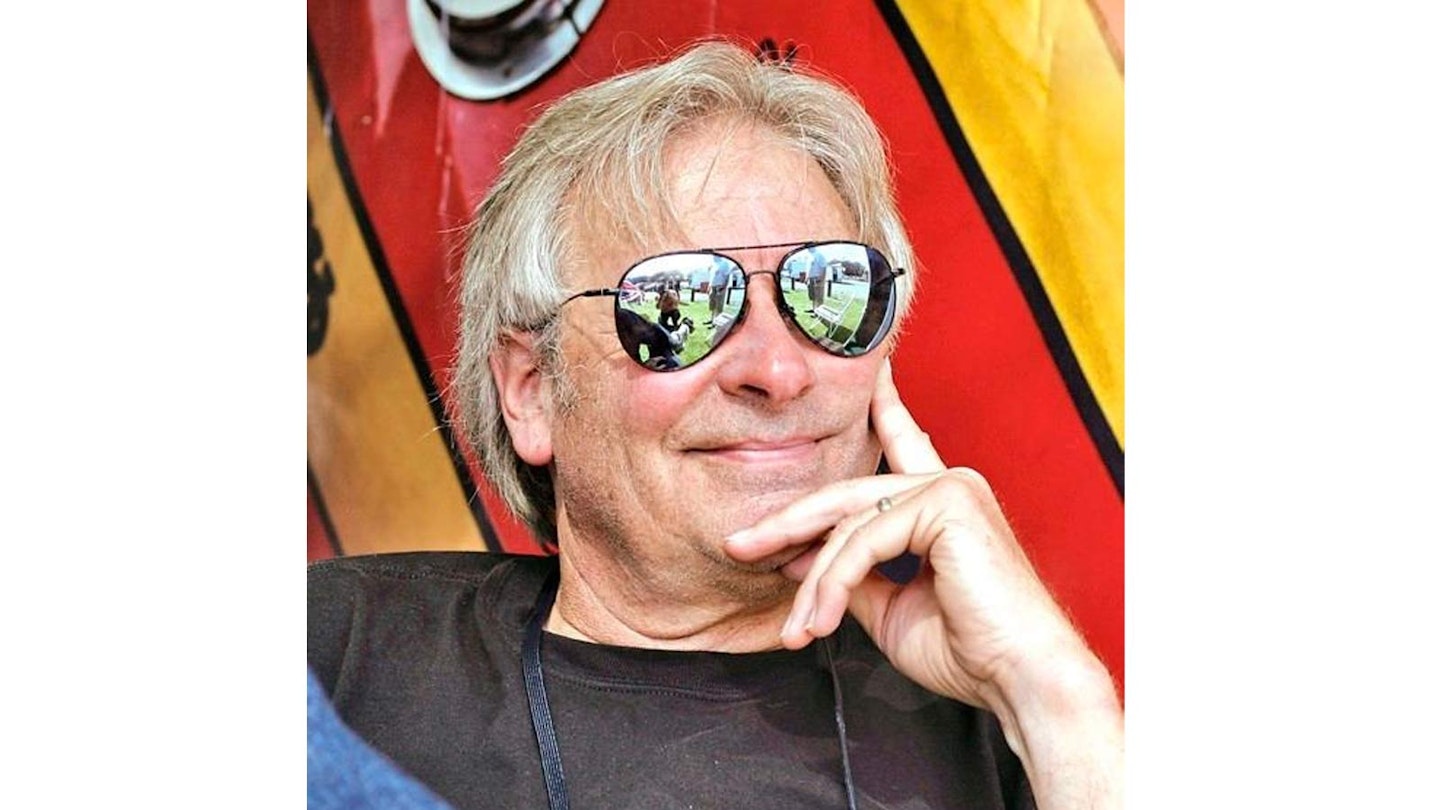
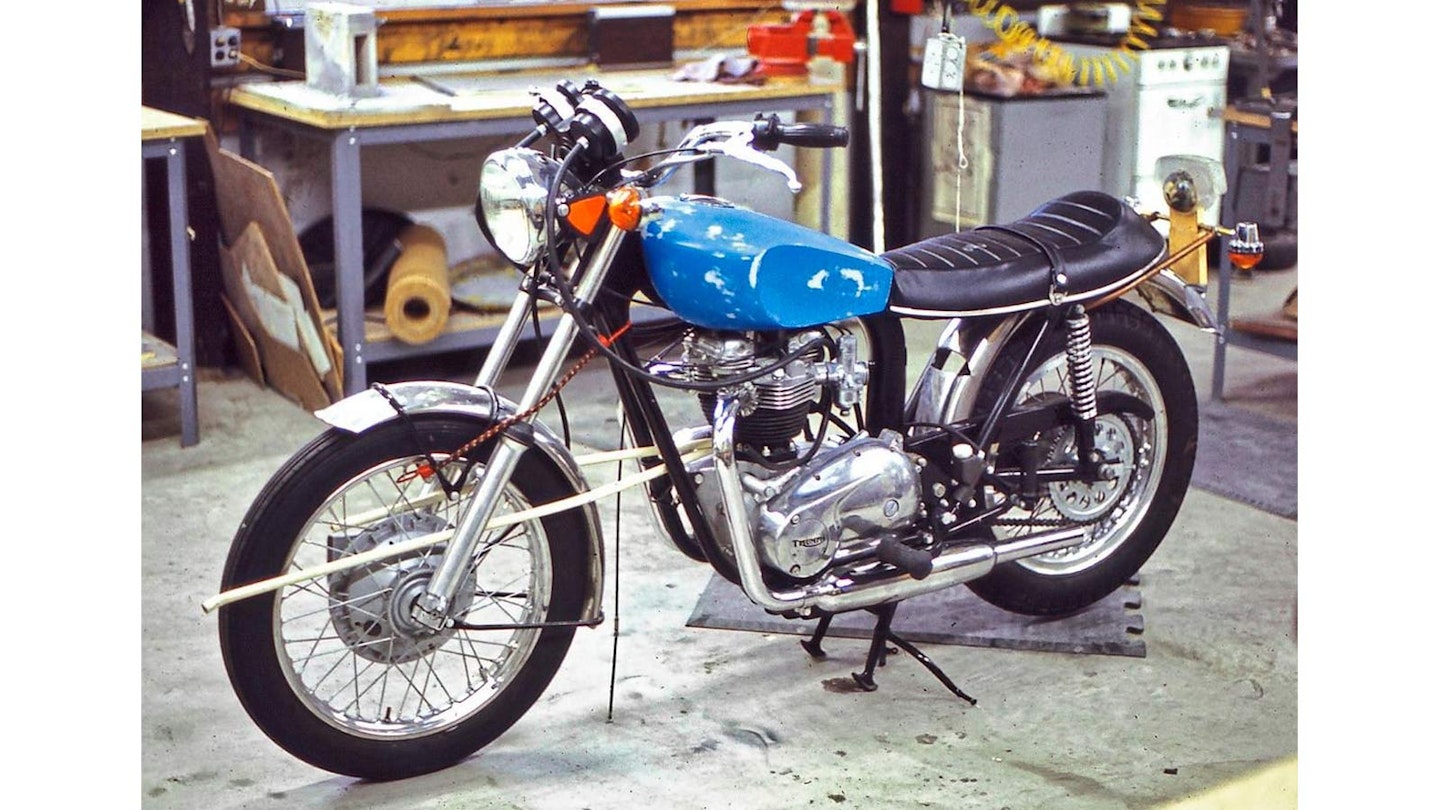
In 2015 Craig Vetter suffered life-changing injuries at the age of 72 after a wild deer hit his Honda CN250-based feet-first streamliner near his California home. CB thanks him for collaborating with this article.
